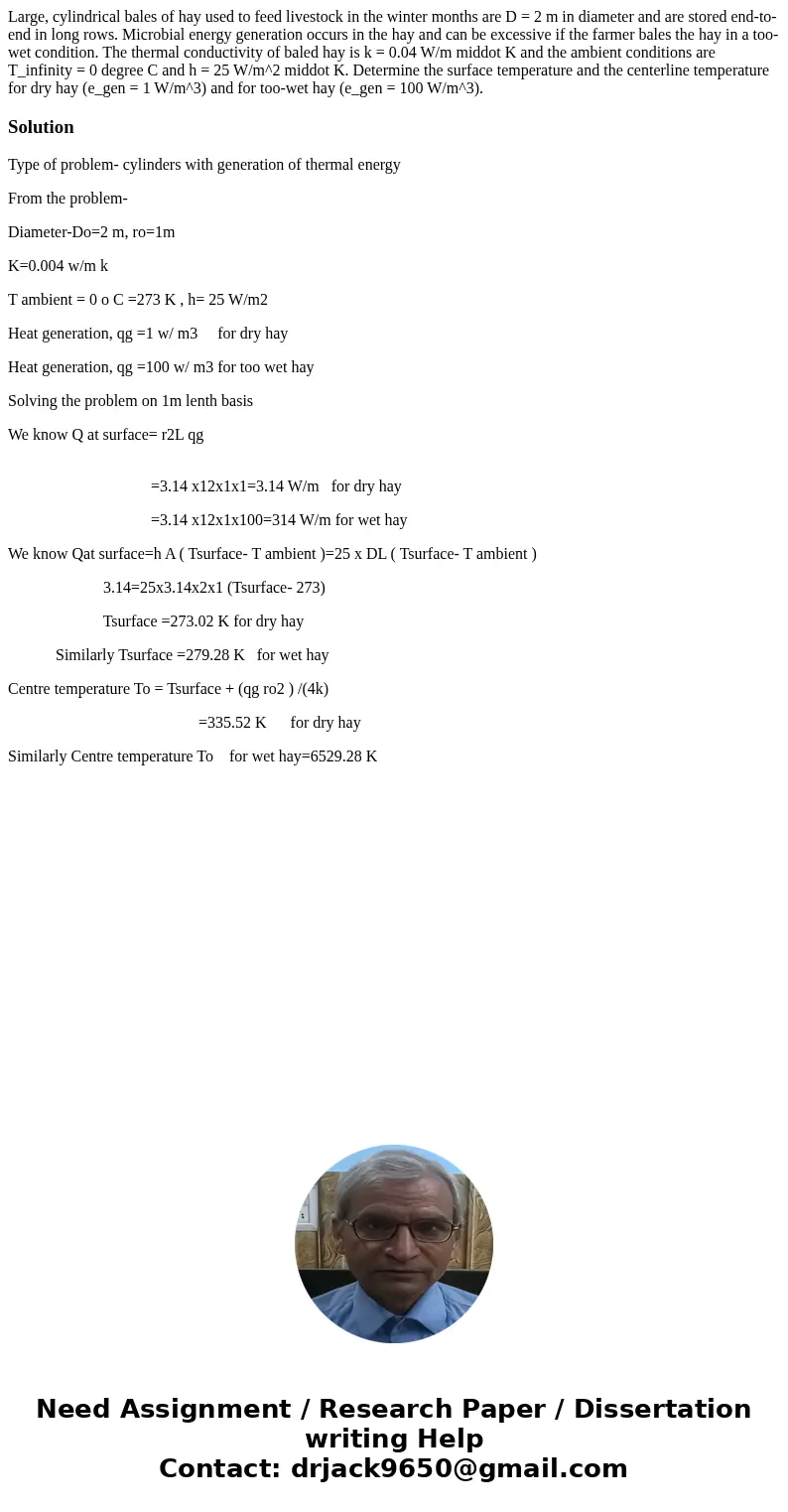Large cylindrical bales of hay used to feed livestock in the
Solution
Type of problem- cylinders with generation of thermal energy
From the problem-
Diameter-Do=2 m, ro=1m
K=0.004 w/m k
T ambient = 0 o C =273 K , h= 25 W/m2
Heat generation, qg =1 w/ m3 for dry hay
Heat generation, qg =100 w/ m3 for too wet hay
Solving the problem on 1m lenth basis
We know Q at surface= r2L qg
=3.14 x12x1x1=3.14 W/m for dry hay
=3.14 x12x1x100=314 W/m for wet hay
We know Qat surface=h A ( Tsurface- T ambient )=25 x DL ( Tsurface- T ambient )
3.14=25x3.14x2x1 (Tsurface- 273)
Tsurface =273.02 K for dry hay
Similarly Tsurface =279.28 K for wet hay
Centre temperature To = Tsurface + (qg ro2 ) /(4k)
=335.52 K for dry hay
Similarly Centre temperature To for wet hay=6529.28 K

 Homework Sourse
Homework Sourse